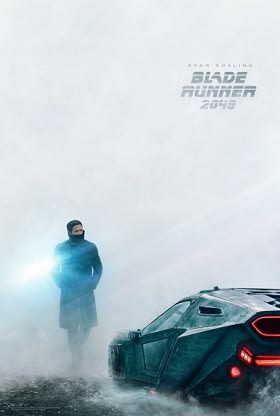Blade Runner 2049 filmed in Budapest studios
Denis Villeneuve’s sci-fi epic Blade Runner 2049 filmed in Hungary, building a vision of a dystopian Los Angeles on multiple sound stages in Budapest.
By Nick Goundry 4 Oct 2017

Denis Villeneuve’s sci-fi epic Blade Runner 2049 filmed in Hungary, building a vision of a dystopian Los Angeles on multiple sound stages in Budapest.
The film is a direct sequel to Ridley Scott’s 1982 sci-fi classic, with Scott returning as an executive producer. Set 30 years after the events of the first movie, the new film follows Ryan Gosling’s young detective in a grimy America of 2049.
A decision was made early on to build physical sets for the film. The move is generally welcomed by cast and crew alike on big-budget movies, while audiences are thought to appreciate the approach more than relying too much on digital effects.
The visuals of the Blade Runner universe have become iconic in cinematic production design since the release of the first film.
Producers on the new movie used all six stages and a back lot at Origo Film Studios on the outskirts of the Hungarian capital, as well as a further three stages at Korda Studios in Etyek to the west of the city, to craft their sets.
“The facilities there are top-notch – as good as you can find anywhere – but what attracted us to Hungary, and Budapest particularly, was the diversity of looks within the city; eastern European architecture mixed in with the brutalist Soviet-era structures,” said Bill Carraro, one of the film’s executive producers.
Whereas the original Blade Runner took place entirely in a futuristic Los Angeles, the new film also takes the story to future visions of San Diego and Las Vegas, both of which were built in Budapest.
Brutalist story settings including a vast scrapyard and Las Vegas itself were created by merging studio sets with industrial warehouse locations in and around the Hungarian capital.
Model work was used to create many of the film’s dystopian cityscapes for wide-angle and aerial shots. These were constructed by Weta Workshop in New Zealand, which is now one of the world’s most prolific providers of special and visual effects.
“We chose what scale to build the different sets because a lot of things had to be taken into consideration,” said Alex Funke, director of photography for Weta.
“How close are you going to come to it? What kind of surface texture does it have? What size is the actual object supposed to be? And, practically speaking, how hard is it going be to get it out of the shop and to the studio?”
Budapest has become a production hub in Eastern Europe. Origo Film Studios has also recently hosted the Cold War action movie Atomic Blonde and Ron Howard’s conspiracy thriller Inferno. Ridley Scott previously filmed his sci-fi hit The Martian at Korda and the facility has also been used for Otto Bathurst’s upcoming Robin Hood: Origins and the TV dramas Emerald City and Marco Polo.
Images: Stephen Vaughan/Warner Bros/Alcon Entertainment
A decision was made early on to build physical sets for the film. The move is generally welcomed by cast and crew alike on big-budget movies, while audiences are thought to appreciate the approach more than relying too much on digital effects.
The visuals of the Blade Runner universe have become iconic in cinematic production design since the release of the first film.
Producers on the new movie used all six stages and a back lot at Origo Film Studios on the outskirts of the Hungarian capital, as well as a further three stages at Korda Studios in Etyek to the west of the city, to craft their sets.
“The facilities there are top-notch – as good as you can find anywhere – but what attracted us to Hungary, and Budapest particularly, was the diversity of looks within the city; eastern European architecture mixed in with the brutalist Soviet-era structures,” said Bill Carraro, one of the film’s executive producers.
Whereas the original Blade Runner took place entirely in a futuristic Los Angeles, the new film also takes the story to future visions of San Diego and Las Vegas, both of which were built in Budapest.
Brutalist story settings including a vast scrapyard and Las Vegas itself were created by merging studio sets with industrial warehouse locations in and around the Hungarian capital.
Model work was used to create many of the film’s dystopian cityscapes for wide-angle and aerial shots. These were constructed by Weta Workshop in New Zealand, which is now one of the world’s most prolific providers of special and visual effects.
“We chose what scale to build the different sets because a lot of things had to be taken into consideration,” said Alex Funke, director of photography for Weta.
“How close are you going to come to it? What kind of surface texture does it have? What size is the actual object supposed to be? And, practically speaking, how hard is it going be to get it out of the shop and to the studio?”
Budapest has become a production hub in Eastern Europe. Origo Film Studios has also recently hosted the Cold War action movie Atomic Blonde and Ron Howard’s conspiracy thriller Inferno. Ridley Scott previously filmed his sci-fi hit The Martian at Korda and the facility has also been used for Otto Bathurst’s upcoming Robin Hood: Origins and the TV dramas Emerald City and Marco Polo.
Images: Stephen Vaughan/Warner Bros/Alcon Entertainment
Latest news & features
Featured profiles
Promote your services with KFTV
Choose from three profile types - Basic, Silver and Gold
Create ProfileWe offer a range of display advertising opportunities.
Learn More